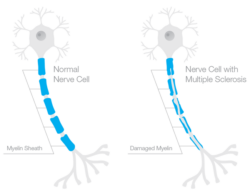Sharing an interest in vitamins and hormones, a friend asked me, “If you only could take one daily vitamin supplement, which one would you take?” I replied, “Vitamin D3.” Somewhat astonished, she clarified, “Vitamin D3, not just vitamin D?” I responded, “Not vitamin D or D2, but vitamin D3. Studies have indicated how beneficial vitamin D3 is to our cellular and bone health, and the prevention of some cancers and many other diseases including multiple sclerosis. Here we are living in sunny Las Vegas yet many of us are deficient in vitamin D3.” Believe it or not, my initial vitamin D3 blood test level was shockingly low. Since that time, I take at least 5,000 IU vitamin D3 daily and enjoy significantly better health. Today vitamin D3 is arguably America’s “it” supplement.
Most Americans—across generations and geographical locations—unknowingly suffer from deficient levels of vitamin D3 because our bodies lack the natural resources of this essential nutrient. Burgeoning medical studies indicate that low vitamin D3 levels are associated with the increased risk of cancers including breast, colon, and prostate, as well as a host of other serious medical conditions including heart disease, multiple sclerosis, autism, bone disease, diabetes, infections, and chronic pain. Symptoms of low vitamin D3 levels tend to be common complaints including muscle weakness, fatigue, and chronic back pain. The good news is that vitamin D3 deficiency is not only easy to diagnose by evaluating the results of a simple blood test, but can be readily resolved by taking inexpensive oral supplements.
Vitamin D3 is actually a steroid hormone, produced by our bodies when: a) our skin is exposed to solar ultraviolet B (UVB) rays for varying amounts of time and under certain conditions, or b) we consume vast quantities of cod-liver oil and fatty fish. However, unless you bask daily in UVB rays under optimal absorption conditions or eat immense amounts of wild-caught fatty fish, you probably have insufficient vitamin D3, increasing your risk of developing serious medical issues.
Simply sunbathing on a regular basis does not guarantee adequate vitamin D3 intake. A multitude of factors affect the degree of UVB sun rays absorbed by our bodies to produce vitamin D3: geographic location including latitude and altitude; a limited amount of solar UVB light; time of day and year; cloud cover; air quality; age; body weight; skin pigmentation; sunscreen use; and amount of clothing covering our bodies.
As we age, we produce less of circulating vitamin D3 (calcidiol or 25-hydroxyvitamin D) in our blood and, therefore, make less activated vitamin D3 (calcitriol) in our cells. Overweight and obese people also have difficulty producing sufficient vitamin D3. As vitamin D3 is fat-soluble, the human body’s fat cells absorb this essential nutrient, decreasing its availability to the tissue and organs. According to a study published in the American Journal of Clinical Nutrition, the vitamin D3 levels of obese persons were 57 percent lower than “lean” people exposed to the same levels of UVB light.
Most American diets are not rich in vitamin D3. Foods that naturally contain vitamin D3 include salmon, mackerel, sardines, and cod-liver oil (they also contain a large amount of vitamin A, potentially causing vitamin A toxicity). In addition, a number of foods are fortified with “vitamin D” (either D2 or the preferred D3). Common vitamin D-fortified foods in the United States include milk, cereal, yogurt, and fruit juices but they contain only small amounts of vitamin D3. Therefore, fortified foods most likely will not effectively treat a vitamin D3 deficiency because large quantities of these foods would need to be consumed daily. For example, you would need to drink 10 eight-ounce glasses of vitamin D-fortified milk daily to obtain merely 1,000 IU of vitamin D. Another concern about fortified food products is the uncertainty of their vitamin D content. A study confirmed that the majority of the sampled fortified milk contained less than 20 percent of the stated amount on the product label. Furthermore, sampled quantities of the same brand of milk contained varying amounts of vitamin D on different days.
The most practical and effective treatment of vitamin D3 deficiency is simply taking an inexpensive, oral (a pill or sub-lingual drops) bioidentical vitamin D3, i.e., cholecalciferol, supplement that is readily available without a prescription. However, carefully read supplement labels before purchasing these products: accept no substitutes and ensure the dosage is commensurate with increasing your vitamin D3 blood levels!
In the United States vitamin D3 is available only over the counter. The only prescription for vitamin D in the United States is ergocalciferol or vitamin D2. Ergocalciferol, a plant product, is not naturally produced in our bodies, and is not a bioidentical replacement for vitamin D3. Research has indicated vitamin D3 supplementation “increases serum-25-hydroxyvitamin D more efficiently than does vitamin D2.”
Although the U.S. medical community is redefining (and increasing) the optimal levels of vitamin D3, a number of experts have opined that a healthy range of circulating vitamin D3 is at least 50-80 ng/mL. The most accurate way to determine your vitamin D3 level is to request a simple blood serum test from your healthcare practitioner. The name of the blood test is 25-hydroxyvitamin D. Owing to the medical findings over the past decade, routine blood work ordered by a practitioner often includes a vitamin D evaluation. Nonetheless, it is a good idea to check with your practitioner before your blood is drawn to ensure that the vitamin D blood test is included on the laboratory order form. Many healthcare plans cover all, or at least partial, costs of the blood test. (The ICD-9 code is 268.9.) Home test kits for 25-hydroxyvitamin D also are available on-line from reputable laboratories.
Despite the fact that vitamin D3 is stored in our fat cells and readily available in high dosages, vitamin D3 toxicity is rare. Monitor—in concert with your healthcare practitioner—your hormone and vitamin levels to ensure that your body’s tissues, organs, and cells enjoy optimal levels of these essential nutrients. Supplementing with vitamin D3 is an incredibly easy, safe, and inexpensive way to empower your health.
Copyright ©2011 by Susan Rex Ryan All rights reserved.













Wow, Suzanne. This is good information. I’m confused as to why cancer rates in the UK are higher for darker skinned people (my mother died of colon cancer). If vitamin D is protective against cancer, wouldn’t people who synthesize a lot of vitamin D (assuming dark skinned people do) have more protection than lighter skinned individuals? Or does melanoma come into play at this point to impact cancer rates?
Actually dark skin blocks and protects against overexposure. The downside is darken skin requires 4-10 times More exposure to make the same amounts of Vitamin D. If you’re genetically designed to live near the equator but reside at high latitudes you’re making much less per exposure, and for less time out ofthe year. VitaminD winter.
Suzanne, very interesting points. I wonder if you might consider writing a blog post for us. We can link back to your site. Cool application. Does it just track sun and UV or does it track all weather, with an emphasis on UV exposure?
It may depend on your skin type and where you live. Pale skinned people in the UK don’t have particularly high rates of melanoma unless they take a lot of vacations in sunny places or use tanning salons. Pale skinned people in sunnier places like Australia do have higher rates. In the UK, we have high rates of colon cancer, breast cancer, and other cancers. Vitamin D is probably protective against colon cancer, and it increases the chances of surviving these other cancers. For darker skinned people in the UK, cancer rates are pretty high, particularly colon cancer. Melanoma rates for people with dark skin in the UK are very low. Sitting in the park or outdoor cafe to eat your lunch will not generally lead to skin cancer. It is more likely to save you from a number of other cancers.
The link between carcinoma and sunshine is pretty clear, but the link between melanoma and sun is not. Outdoor workers have lower melanoma rates than would be expected if excess sun was all that mattered. Some scientists are proposing that the body can heal mutations caused by UVB light better than those caused by UVA. (D.E. Godar at US FDA) This is why we are now encouraged to use ‘broadband’ sunscreens that reduce UVA as well as UVB.
Vitamin D is synthesized by UVB radiation on the skin. Vitamin D is not made when the sun is low in the sky because the UVB is too weak under those conditions. The amount of UVB relative to UVA is highest at noon, when the sun is highest in the sky, and this is the best time to make vitamin D while keeping UVA exposure to a minimum.
Supplements are useful, but there are things to consider there as well. Vitamin D3 comes primarily from fish. Some people are concerned about the fat-soluble toxins such as dioxin or mercury that can accumulate in fish oils. If you take supplements, make sure they are are from a reputable supplier with a good, traceable chemical analysis. For vegetarians and vegans, finding acceptable vitamin D supplements can be difficult. Vitamin D2 generally comes from mushrooms, but it seems to have somewhat different activity in the body than D3.
There is an alternative to taking supplements. While there are a lot of factors involved in getting vitamin D from the sun, a smart phone can keep track of these factors and tell you how much vitamin D you can get on your way to the car. Apps like iSunHealth tell you how long it will take in the sun to make a target amount of vitamin D.
But shouldn’t we worried about spending too much time in the sun? What about melanoma? Wouldn’t supplements be an easy way of staying out of the sun for too long?
I never knew that there was a specific D3 vitamin! What’s more, I never knew that you could get vitamin A toxicity (which I would like to learn more information about). I will pass this information on to friends and family that have showed interest in upping their vitamin D intake.
Thank you!